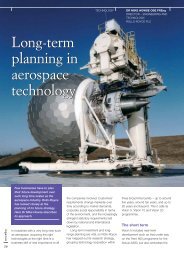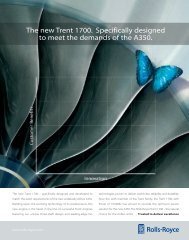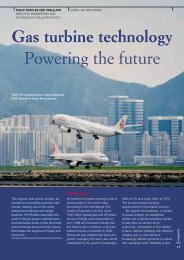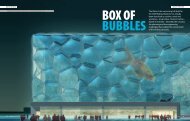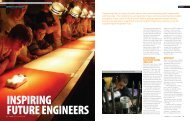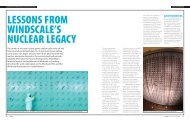Art and engineering - Ingenia
Art and engineering - Ingenia
Art and engineering - Ingenia
Create successful ePaper yourself
Turn your PDF publications into a flip-book with our unique Google optimized e-Paper software.
SOCIETY<br />
ENGINEERING ART<br />
FROM SCIENCE<br />
The physicist <strong>and</strong> engineer Colin Dancer works for the company Data Connection <strong>and</strong> has<br />
helped take them from straight software into next generation telecoms. In parallel he<br />
partners the leading contemporary artist Paul Fryer, in creating works that bridge science<br />
<strong>and</strong> the arts. He writes for <strong>Ingenia</strong> about the results of this fruitful collaboration.<br />
‘Deus Ex Machina’, 2005. A caged lightning machine with Paul Fryer, the artist, in the background © Courtesy collection of Damien Hirst; Photograph by Fabio Paleari<br />
INGENIA ISSUE 36 SEPTEMBER 2008 35
ENGINEERING ART FROM SCIENCE<br />
SOCIETY<br />
‘Petit Mal’ (Variation). Our second joint work, generating a mass of writhing high voltage streamers<br />
between two towers. The photo fails to do justice to the simultaneous assault on the senses from the actinic<br />
light of the arcs, noise of the discharge <strong>and</strong> the smell of ozone <strong>and</strong> oxides of nitrogen!<br />
The next chance to see Paul <strong>and</strong> Colin’s work in London will be the exhibition ‘Let there<br />
be more light’, 14-21 October 2008. It will be split across two sites: Holy Trinity Church,<br />
Marylebone, Marylebone Road, London NW1 11am – 7pm; <strong>and</strong> Simon Dickinson, 58<br />
Jermyn Street, London SW1 10am – 5pm. Collaborative works will include cosmic ray<br />
viewers, giant tuning forks, more captured stars <strong>and</strong> the essence of the aurora borealis.<br />
Contact: www.allvisualarts.org, on 020 7209 5670; <strong>and</strong> www.simondickinson.com, on<br />
020 7499 0722<br />
So what’s a practising engineer, who initially<br />
trained as a physicist, doing collaborating<br />
with a contemporary artist? And why does<br />
the resulting work seem to be helping<br />
people develop an interest in <strong>engineering</strong>?<br />
For many people, science <strong>and</strong> art are two<br />
entirely separate worlds, one using the head,<br />
the other the heart. Engineering, if people<br />
think of it at all, is considered a separate<br />
subject; the majority seeing it as mainly<br />
about people getting their h<strong>and</strong>s dirty.<br />
As engineers, we know there is a lot<br />
more to <strong>engineering</strong> than metal <strong>and</strong> oil, but<br />
even so, many of us often view science as<br />
simply providing us with new materials <strong>and</strong><br />
tools <strong>and</strong> art as something you appreciate<br />
during your spare time.<br />
CREATING MASTERPIECES<br />
However, this is a surprisingly recent point of<br />
view. Leonardo da Vinci is probably the best<br />
known example of the multi-disciplinary ideal,<br />
with his overlapping passions for <strong>engineering</strong>,<br />
art <strong>and</strong> science leading him to excel in all.<br />
The potential benefits can be seen<br />
throughout history, all the way from<br />
Venetian artisans using their mastery<br />
of materials to produce functional yet<br />
elegant creations from glass, to the<br />
heights of the Victorian era where new<br />
scientific underst<strong>and</strong>ing was combined<br />
with an artistic appreciation <strong>and</strong> rapidly<br />
developing industrial methods to produce<br />
some amazingly effective, yet beautiful<br />
<strong>engineering</strong> marvels.<br />
BOLT FROM THE BLUE<br />
Anyway, despite the evident benefits, I must<br />
confess that, until three years ago, I was one<br />
of those who thought art was something<br />
that only ‘artists’ produced, <strong>and</strong> that it had no<br />
role to play in helping people engage with<br />
<strong>engineering</strong>. Then, out of the blue, I got an<br />
email from an artist, Paul Fryer, who was trying<br />
to make a lightning sculpture using Tesla coils<br />
(resonant transformers which allow you to<br />
produce millions of volts <strong>and</strong> writhing arcs<br />
several metres long from a normal 13 amp<br />
outlet). He’d found from the web that I’d built<br />
such coils for a hobby <strong>and</strong> asked for help.<br />
One thing led to another, <strong>and</strong> after<br />
overcoming a number of <strong>engineering</strong><br />
challenges (for example, exactly how do you<br />
get a million volt arc to go in the direction<br />
you want?) the piece of art that resulted,<br />
‘Deus Ex Machina’, was bought by Damien<br />
Hirst for £27,000.<br />
CREATING A BUZZ<br />
The thing which really struck me about ‘Deus<br />
Ex Machina’, was the way people reacted<br />
when the work went on display. I knew that<br />
the physical impact would mean it couldn’t<br />
be ignored; the noise, sight <strong>and</strong> smell of the<br />
piece grabbed people at a visceral level.<br />
But more than that, people with no preexisting<br />
bias towards <strong>engineering</strong> or science<br />
suddenly wanted to know everything from<br />
the physics behind the piece, through the<br />
materials <strong>and</strong> construction techniques, to the<br />
detailed <strong>engineering</strong> behind elements such as<br />
the high speed rotary spark. These questions<br />
came from people spanning the whole age<br />
range <strong>and</strong> both sexes. Several even asked for<br />
contact details <strong>and</strong> I know they have started<br />
h<strong>and</strong>s-on-work of their own.<br />
Since then, Paul <strong>and</strong> I have collaborated<br />
on a wide range of art/<strong>engineering</strong>/science<br />
works including fusion reactors (sadly not<br />
capable of breaking even), red hot, cast iron<br />
skulls heated by induction heaters, cosmic ray<br />
detectors, rising arcs <strong>and</strong> giant tuning forks.<br />
AN ORGANIC PROCESS<br />
My involvement isn’t just as an ‘enabler’ but<br />
starts right at the inception of the work.<br />
Sometimes, Paul will have an image or<br />
concept in mind <strong>and</strong> we work together<br />
to flesh it out into something which can<br />
actually be made. Other times, I’ll have<br />
the initial idea, often including a way of<br />
achieving it, <strong>and</strong> working together we’ll<br />
sharpen the proto-work into an artistically<br />
coherent piece.<br />
Despite our different backgrounds, we<br />
have a strongly aligned sense of what is<br />
‘right’, whether that be in terms of how<br />
something looks or how it works. Both of<br />
us have an almost obsessive appreciation of<br />
symmetry <strong>and</strong> geometric beauty – the ratio<br />
of case dimensions has to be just so, bolts<br />
have to be aligned in a particular fashion,<br />
etc. Similarly, we share a forceful gut instinct<br />
for when the design of a mechanism or<br />
circuit design is correct <strong>and</strong> when it still<br />
needs work.<br />
Having said that, even with a shared<br />
outlook, there is almost always a tension<br />
between artistic desire <strong>and</strong> <strong>engineering</strong><br />
reality. However, perhaps counterintuitively,<br />
this potential conflict is at the very heart of<br />
our work together, providing a constructive<br />
force that both guides the form of the pieces<br />
<strong>and</strong> also pushes one to explore <strong>and</strong> extend<br />
the boundaries of techniques, materials <strong>and</strong><br />
technologies.<br />
AN IDEA EMERGES<br />
For instance, for our third joint work, Paul<br />
wanted to try <strong>and</strong> capture the essence of<br />
a star. He’d heard about a process called<br />
sonoluminescence, where a high powered<br />
ultrasonic field is used to create tiny<br />
bubbles in a liquid. These bubbles contain<br />
small amounts of gas <strong>and</strong> when surface<br />
tension causes the bubbles to collapse,<br />
the speculation is that the temperatures<br />
reached might be high enough to achieve<br />
thermonuclear fusion.<br />
I also knew about the technique, but<br />
while I found the concept fascinating, I<br />
suspected that it wasn’t going to make for<br />
great art – the process is hard to control, the<br />
bubbles very small <strong>and</strong> the amount of light<br />
given off is minuscule. Instead I suggested<br />
we might be able to produce a work<br />
using a process called inertial electrostatic<br />
confinement (IEC).<br />
IEC is a technology initially developed<br />
during the 1950s by Philo T Farnsworth<br />
(the gentleman responsible for the first<br />
completely electronic television <strong>and</strong><br />
the video camera tube) with the aim of<br />
providing cheap, clean fusion energy. It<br />
achieved the goal of fusion, but except for<br />
providing a compact neutron source, was<br />
ab<strong>and</strong>oned due to an inability to break even<br />
in terms of energy budget.<br />
‘Pit’, 2007. A fist-sized cast iron skull that slowly cycles from darkness to red heat <strong>and</strong> back again with no<br />
visible source of energy. This work was produced for a multi-artist show on the theme of Edgar Allan Poe,<br />
<strong>and</strong> is inspired by the story ‘The Pit <strong>and</strong> The Pendulum’ which ends with bone-covered walls starting to glow<br />
red hot. After failed experimentation with embedded resistive heaters we settled on using an industrial<br />
induction heater, with the skull supported on a thermal shock resistant ceramic board<br />
36 INGENIA ISSUE 36 SEPTEMBER 2008<br />
INGENIA ISSUE 36 SEPTEMBER 2008 37
ENGINEERING ART FROM SCIENCE<br />
SOCIETY<br />
CONSIDERING THE<br />
PRACTICALITIES<br />
In its simplest form, two concentric spherical<br />
wire ‘grids’, one about a fifth of the radius<br />
of the other, are placed in a vacuum vessel.<br />
The pressure is reduced to about a millionth<br />
of an atmosphere, residual air is replaced<br />
by deuterium <strong>and</strong> the inner grid is made<br />
negative to the outer grid by between<br />
10 KV <strong>and</strong> 100 KV. At a detailed level what<br />
happens next is very complex, but at a high<br />
level the gas ionizes, the positively charged<br />
ions are accelerated towards the inner<br />
grid, pass through the holes <strong>and</strong> form a<br />
compressed mass in the middle. The energy<br />
gained by the acceleration is equivalent to<br />
a temperature of many millions of degrees,<br />
<strong>and</strong> if a collision occurs between two ions<br />
the forces are high enough to give the<br />
potential of fusion.<br />
I didn’t propose we use deuterium<br />
because a work producing a large neutron<br />
flux is bad for viewer health, but I felt it<br />
had the potential to deliver Paul’s goal of<br />
a sculpture encapsulating the essence of a<br />
star.<br />
STAR IN A JAR<br />
Paul loved the sound of this approach <strong>and</strong><br />
went away to do some background research.<br />
A little bit later he called me on the phone,<br />
raving about an idea involving a suspended<br />
6 ft diameter glass vacuum vessel containing<br />
a ball of white hot plasma. I explained that<br />
this might be a little tricky to achieve due to<br />
minor issues like the massive atmospheric<br />
forces on the vacuum vessel, the need for<br />
huge pumps <strong>and</strong> the fact that scaling factors<br />
make it increasingly hard to dissipate waste<br />
heat. We went backwards <strong>and</strong> forwards for<br />
a bit, but eventually converged on a system,<br />
the heart of which was a Pyrex bell jar about<br />
12 inches in diameter.<br />
That, however, was the easy part.<br />
‘Perpetual Study In Defeat’, 2006, Third Edition. The piece we informally know as ‘Star in a Jar’ with its<br />
‘clothes’ off, showing the high speed scroll pump, valve gear, pressure sensor, high voltage transformer <strong>and</strong><br />
power modulator. At the top is the vacuum chamber <strong>and</strong> the heart of the work. Note, there is normally a<br />
polished black case covering the lower framework, <strong>and</strong> a toughened-glass blast shield over the top of the<br />
machine<br />
PROBLEM SOLVING<br />
To produce a viable work required us<br />
to design <strong>and</strong> master systems using<br />
diverse technologies such as a vacuum<br />
pump capable of achieving pressures a<br />
few millionths of atmospheric pressure,<br />
modulated high voltage power sources at<br />
the ten thous<strong>and</strong> volt level, <strong>and</strong> computer<br />
control systems such that the work could<br />
just be plugged in <strong>and</strong> left to look after itself,<br />
despite the wide range of system variables<br />
<strong>and</strong> complex behaviour.<br />
One of the trickiest problems was<br />
finding a method for bonding the thin<br />
tantalum wires of the inner ‘grid’ (the<br />
crisscross of wires round the glowing<br />
ball in the middle of the picture) which<br />
has to withst<strong>and</strong> particles at an effective<br />
temperature of 10,000,000 K. Spot welding<br />
was an obvious c<strong>and</strong>idate, but finding a<br />
tool capable of working reliably on the very<br />
small scale proved challenging, especially<br />
as a complete grid requires 30 near perfect<br />
welds <strong>and</strong> a single over-energetic weld<br />
could force one to start again. (In the end<br />
we had to build our own welder.)<br />
STAR STRUCK<br />
However, the resulting piece <strong>and</strong> people’s<br />
reaction to it, made all the effort worthwhile.<br />
Very different from the lightning sculptures,<br />
the slow breathing motion of the star (its<br />
formal name is ‘Perpetual Study in Defeat’)<br />
<strong>and</strong> the way its appearance evolves as the<br />
pressure changes over time, unfailingly<br />
draws people into the work. In fact the first<br />
time I got the prototype running I stood <strong>and</strong><br />
stared at it for over an hour, despite being it<br />
being gone midnight.<br />
Furthermore, having reached out to<br />
people on an emotional level, when they<br />
finally break away, it is often with a desire<br />
to underst<strong>and</strong> more about both the<br />
<strong>engineering</strong> <strong>and</strong> science behind what they<br />
have just seen.<br />
SO WHAT’S MY POINT?<br />
Am I trying to suggest that we can address<br />
the low numbers of <strong>engineering</strong> graduates<br />
or the nation’s general indifference to<br />
engineers simply by producing art with<br />
an obvious <strong>engineering</strong> content? No. But<br />
in a world where the wonders of modern<br />
<strong>engineering</strong> are (often by design) passing<br />
unnoticed inside the latest vehicle or gadget,<br />
<strong>and</strong> where, despite best efforts, modern<br />
curricula frequently fail to be relevant <strong>and</strong><br />
engage, I think there is a role for using art to<br />
try <strong>and</strong> ignite the spark of interest.<br />
Close-up of ‘Perpetual Study In Defeat’, 2006. One can see the profile of the outer stainless steel grid <strong>and</strong><br />
can just make out the inner tantalum grid enclosing a white hot ball of plasma. Coming out of the side is<br />
a tight beam of electrons going all the way to the glass bell jar where it causes fluorescence. Sadly, as with<br />
other pieces, the picture fails to capture the dynamic nature of the work <strong>and</strong> the entrancing beauty which<br />
results from the gentle ‘breathing’ of the plasma ball as we modulate the accelerating voltage<br />
I also have to say that I’ve found the creative<br />
experience <strong>and</strong> technical challenge of the<br />
work I’ve produced with Paul immensely<br />
satisfying.<br />
So if you get contacted by an artist<br />
looking for help, don’t dismiss it out of<br />
h<strong>and</strong>…<br />
Further reference<br />
<strong>and</strong> current exhibitions<br />
www.paulfryer.net<br />
www.allvisualarts.org<br />
BIOGRAPHY – Colin Dancer<br />
Colin Dancer is a Cambridge-educated<br />
theoretical physicist, practising engineer<br />
<strong>and</strong> Director of Architecture at Data<br />
Connection, one of the country’s<br />
leading technology companies. His<br />
collaborative works with Paul Fryer,<br />
have featured in a number of Fryer’s<br />
exhibitions, <strong>and</strong> have been exhibited in<br />
the UK, Europe <strong>and</strong> the US. Particular<br />
interests include high-voltage electricity,<br />
nuclear fusion <strong>and</strong> bridging the artificial<br />
divide separating <strong>engineering</strong> <strong>and</strong><br />
science from the arts <strong>and</strong> humanities.<br />
38 INGENIA ISSUE 36 SEPTEMBER 2008<br />
INGENIA ISSUE 36 SEPTEMBER 2008 39


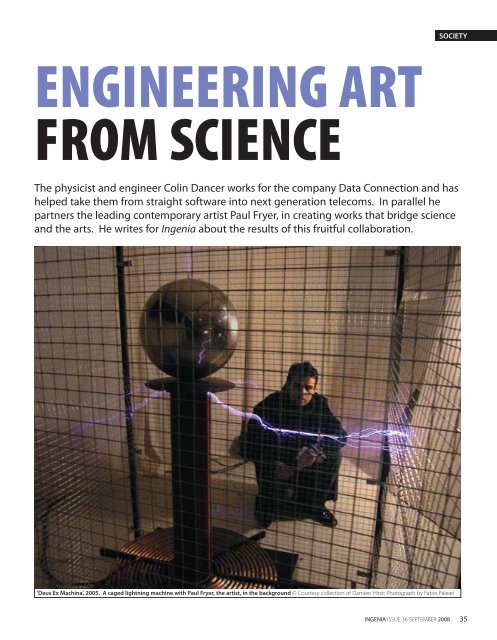
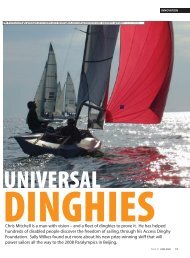

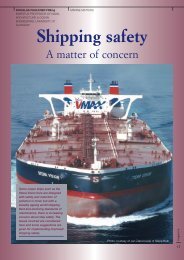
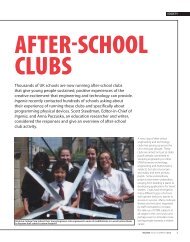

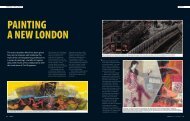
![[322/03] Francke - Ingenia](https://img.yumpu.com/23411337/1/184x260/322-03-francke-ingenia.jpg?quality=85)

